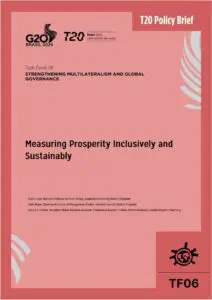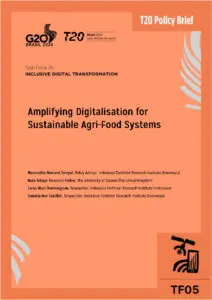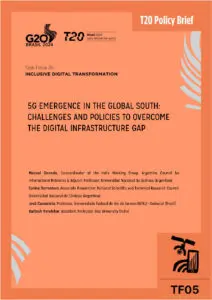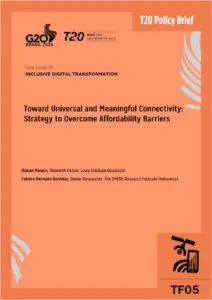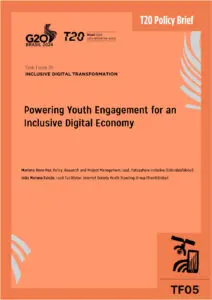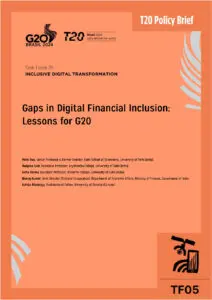Population ageing has become a global concern for most economies due to the implications it has on labor market dynamics and economic development. Ageing results in increased expenditure on health and welfare services, yet the labour force shrinks and is unable to match available labour market opportunities, with detrimental results for production and productivity. Internal policy solutions such as increasing the retirement age and increasing working hours have proved unsuccessful in many countries. There is therefore a need for comprehensive policy actions that integrate internally oriented and externally oriented solutions such as revision of migrant labour and tap into social capital policies.
Challenge
An ageing population in any country poses a threat to productivity and economic participation by local residents, thereby creating a need for immigration policies that opens doors for economically active migrants who can participate in building the economy. In G20 countries such as Japan, medical advancements have resulted in an increased life expectancy of about 84 years (1) in a country where the birth rate is as low as 1.4 births per woman (2). Population ageing projections for 2030 estimate that in in Japan, for example, there will be only one child under 15 for three adults over 64. The figure below presents population-aging projections for 2030 in five big economic players.
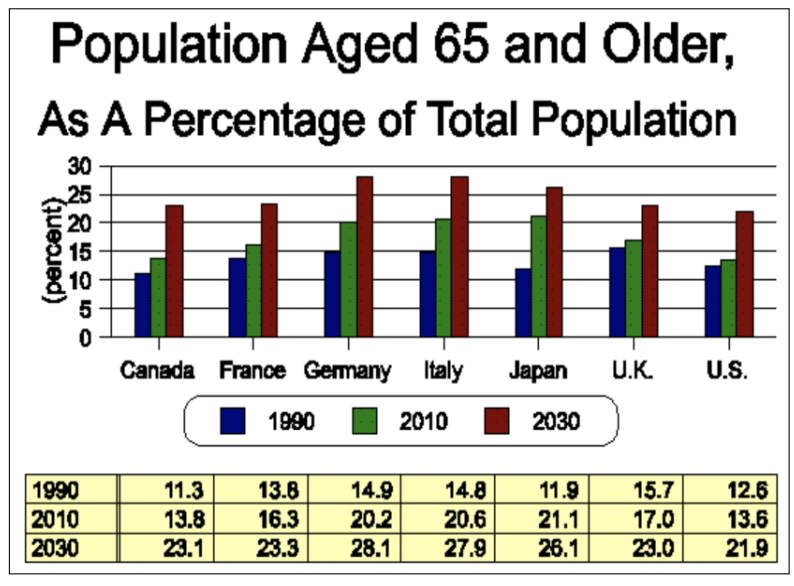
Figure 1: Population projection for 2030 Source: World Population Prospects: The 2015 Revision, United Nations, Department of Economics and Social Affairs (UN DESA)
The figures above clearly show that the ageing process is accelerating, with the number of old people expected to double by 2030 across the globe, including in G20 countries. Although ageing population is considered a success story in the history of humankind, Genda et al., (200) posit that it has repercussions for the labour market dynamics and social welfare expenditure on the elderly. These countries face the challenge of reduced labour force, with detrimental effects on productivity as noted in Branka (2016). This is because as people get to retirement age, there are not enough young people to fill the vacant positions.
In many of the countries with ageing populations women tend to live longer than men, and therefore their participation in the labour market would be an ideal solution. However, there are socio-cultural constraints that bar them. According to Tilly and Scott (2013) in most societies gender continues to be a barrier to women’s participation in the labour force, while in countries like Japan it is traditionally usual to find women in domestic domains and not in the labour force (Branka, 2016). The situation is reportedly exacerbated by the shortage of day care workers if women would go to work. This comes on top of the widely acknowledged physical barriers like childbearing and nursing for women (Sakuragawa and Makino, 2007).
In-wad looking solutions such as: increasing retirement age, increasing working hours and increasing the proportion of women, have proved to be unsuccessful, necessitating out-ward looking solutions that open up migration policies to allow foreigners to come into a country and work. Failure to develop appropriate immigration policies will create difficulties in economies that need to sustain the social safety net programs.
Proposal
1. Management of costs associated with ageing
The existence of population growth and ageing societies is unavoidable, and it comes at a cost to any economy therefore G20 countries have to develop policies that favour investment in social capital to grow the economy as well as care for the ageing population (Thompson, 2010). There is lack of consensus in conceptualizing and measuring social capital (Coleman, 1990, Coleman, 2000, Dah & Zolnik, 2011, Tundui & Tundui, 2013), but this policy brief adopts Kim and Sherraden (2014)’s approach to social capital, which conceptualize it as consisting of informal networks of friends, family, relatives, work groups that could provide economic benefits and resources to both the host and sending countries (Khan et al., 2013; Kim and Sherraden, 2014). In particular, the bridging social capital networks have the potential to bring the networks of the host and sending countries together thereby bringing more resources and wider contacts between the two networks (Eraydin et al., 2010). Investing in these social capital networks is therefore of benefit to the economy of a country.
Some examples of investments in social capital among the G20 countries have focused on long term insurance to provide care at old age for local populations. These include the statutory long-term care insurance financed by compulsory contributions provided by Germany; and Japan’s Diet, which is also considering public long-term care insurance that will take care of those at old age. (World Bank, 2015). While such investments may address the problem of dependence on the state by ageing population, they do not solve the labor market deficiencies that arise out of ageing populations.
G20 countries will therefore benefit from developing policies that tap on migrant labour as a potential social capital that can bring in more resources to the host country. Such policies should make it possible for migrant labour to access the labour market, to receive the same benefits of long term insurance as locals, in recognition of their contribution to the economy and to attract their long term retention in the market.
2. Planning through a Social Capital lens
Industrialized countries, including Japan, are experiencing rapid population ageing and shrinkage. In Japan for example, it is projected that there will be a decline in population by 25% between 2015 and 2050. The elderly dependency ratio will remain the highest at 73% in 2050 compared to the OECD, which was at 44% in 2015 (OECD, 2017a). The implication is that, population ageing will increase spending pressures and exacerbate Japan’s fiscal problems. Ageingrelated spending on pensions and on health and long-term care according to the OECD (2017b) is projected to rise by 7% of GDP between 2020 and 2060. Ageing also has seen the country facing its largest labour shortages since the 1970s. When age-specific labor force participation rates remain constant, the labor force will reflect the smaller, older population, and the rate of decline in the labor force will tend to exceed the rate of population decline and affect the rate of economic growth (Sakuragawa and Makino, 2007). Thus, to address the situation, there is need to do planning through a Social Capital lens. The latter implies making use of all available talents which promote the inclusion of women, the elderly, youth and foreign workers in the labour market (OECD, 2017c). The figure below provides an overview of annual net migration in selected developed and developing countries.
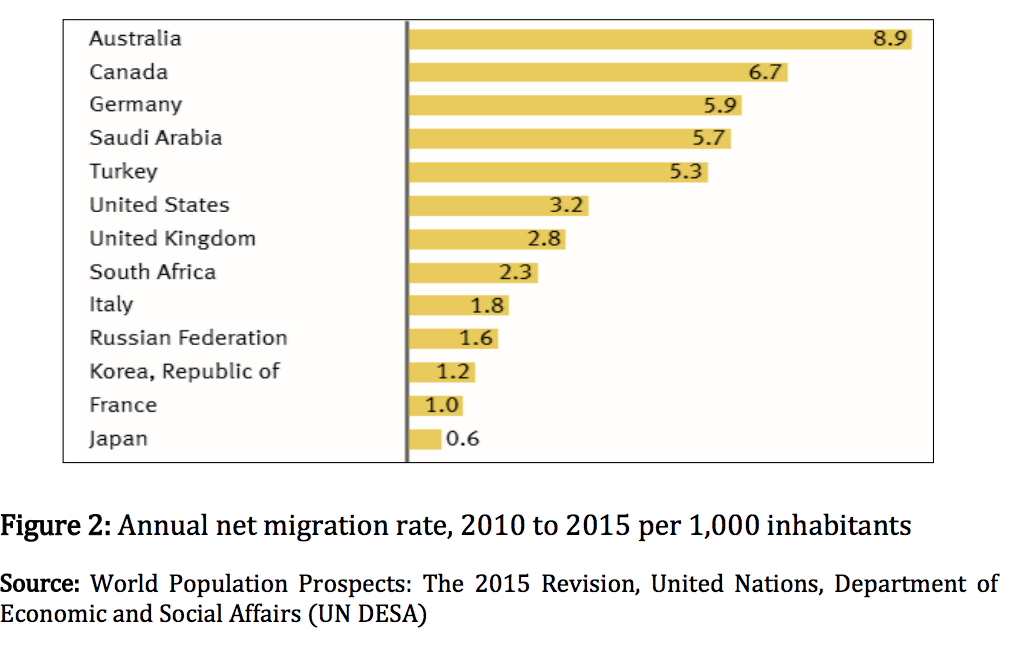
The G20 countries have experienced high volume of immigrants and Japan account for 0.6 per 1000 inhabitants. Japan has seen a number of foreign workers in employment going up by about 20% annually between 2010 and 2015. The indication is that employers are willing to incorporate foreign workers into their labour force. Some of the envisaged benefits of incorporating foreign and local-born workers might be that the two groups perform complementary tasks. According to Piper and Ball (2001) where some unskilled or semi-skilled jobs in the manufacturing, transport, health, catering and construction jobs in Japan become unattractive, migrant labour complement the labour market by being involved in these. This complementarity can increase the productivity of local workers, generating positive results for their employment and wages. The World Bank (2015) reported that foreign labour in developed countries has diverse set of skills they bring which can result in large multiplier effects.
References
• Branka, J. 2016. Strengthening Skills Recognition Systems: Recommendations for Key Stakeholders. (Geneva, ILO),
• Coleman J.S (1990). Foundations of social theory, Harvard University Press, Cambridge, Massachusetts.
• Coleman, J. S. (2000).Social capital in the creation of human capital. In Partha DasGupta and Ismail Serageldin, eds. Social capital: A multifaceted perspective. World Bank, Washington, DC.
• Dah, S. & Zolnik, D. J. (2011) Social capital and entrepreneurship: An exploratory analysis, African Journal of Business Management 5(12), 4961-4975, June.
• Eraydin, A., Tasan‐Kok, T., and Vranken, J. (2010). Diversity matters: Immigrant entrepreneurship and contribution of different forms of social integration in economic performance of cities. European Planning Studies, 18(4), 521‐543.
• Foged, M.; Peri, G. 2016. Immigrant’ Effect on Native Workers: New Analysis on Longitudinal Data. American Economic Journal: Applied Economics, 8(2): 1-34,
• Genda, Y., Teruyama, H., & Ohta, S. (2007). Ageing and employment in Japan. In K. Hamada & H. Kato (Eds.), Ageing and the labor market in Japan (1–23). Cheltenham, UK: Edward Elgar.
• Javorcik, B.S. et al. 2011. Migrant networks and Foreign Direct Investment. Journal of Development Economics, 94(2): 231-241.
• Kim, S. M. & Sherraden, M. (2014). The impact of gender and social networks on microenterprise business performance. Journal of Sociology & Social Welfare , XLI (3), 49-69
• Nicola Piper & Rochelle Ball (2001) Globalisation of Asian migrant labour: The Philippine-Japan connection, Journal of Contemporary Asia, 31:4, 533-554.
• OECD (2017a), How’s Life? 2017: Measuring Well-being, OECD Publishing, Paris, https://dx.doi.org/10.1787/how_life2017-en. • OECD (2017b), Preventing Ageing Unequally, OECD Publishing, Paris, https://dx.doi.org/10.1787/9789264279087-en.
• OECD (2017c), The Pursuit of Gender Equality: An Uphill Battle, OECD Publishing, Paris, https://dx.doi.org/10.1787/9789264281318-en.
• Sakai, H., & Asaoka, H. (2007). Factors affecting labor force participation in Japan: Empirical study of labor supply of the elderly and females. In K. Hamada & H. Kato (Eds.), Ageing and the labor market in Japan (pp. 24–56). Cheltenham, UK: Edward Elgar.
• Sakuragawa, M., & Makino, T. (2007). Labor force ageing and economic growth in Japan. In K. Hamada & H. Kato (Eds.), Ageing and the labor market in Japan (pp. 57– 74). Cheltenham, UK: Edward Elgar.
• Thomposon, W. (2010). Today’s Research on Aging. Program and Policy Implications.US, The National Institute on Aging: 1.
• Tilly, L.A. and Scott, J.W., 2013. Women, work and family. Routledge.
• Tundui,C.,& Tundui, H. (2013). An empirical analysis of social capital and enterprise performance in Tanzania : The case of women owned businesses. International Journal of Developing Societies.2 (1), 50-60.
• United Nations (2012). World Population Prospects. Online, United Nations.
• United Nations (2013). World Population Ageing. Online, Department of Economic and Social Affairs, Population Division.
• World Bank. (2015). World Development Indicators. Retrieved from. https://data.worldbank.org.



